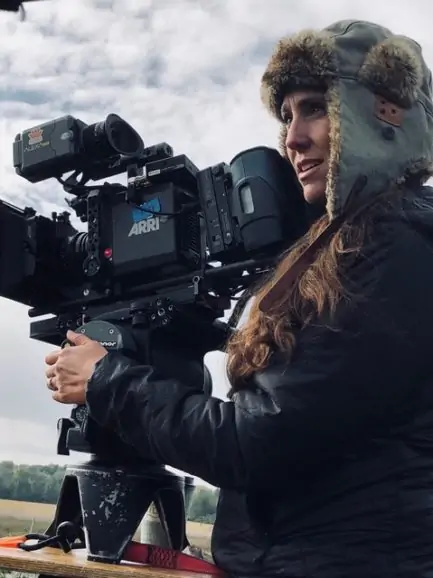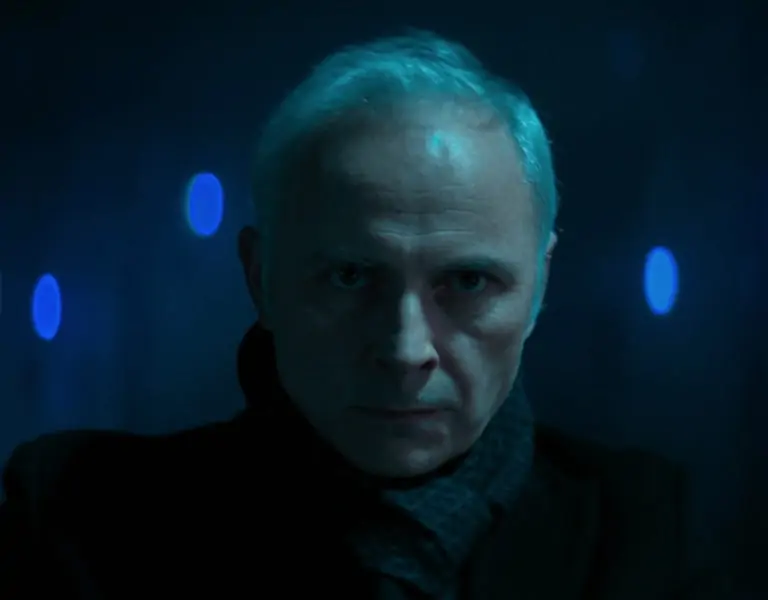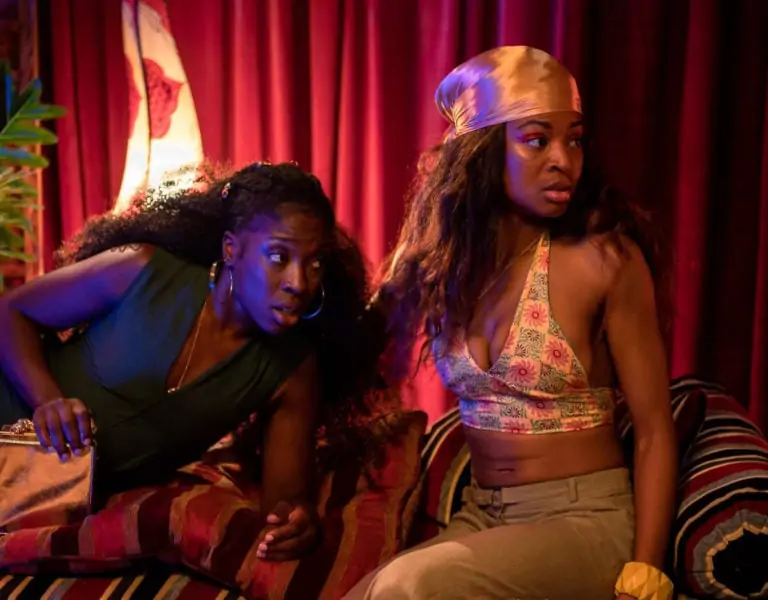DRIVING FORCE
Between the latest documentary project What Drives Us, the film Sound City and series Sonic Highways, cinematographer Jessica Young has been behind the camera with musician and filmmaker Dave Grohl for over 100 interviews.
What Drives Us – directed by Grohl, exec produced by John Ramsay and Jim Rota of Therapy Studios and streaming on Amazon Prime – is, as Young describes it, about “musician misfits cramming into a van to tour the country to cut their teeth” and explores the skills required to be a successful band. “It’s in the spirit of the best do-it-yourself type of attitude,” she says. “This was Dave’s path, and he knows many other musicians who have shared that path.”
A shorter version of the film was intended to play as an opening act for Grohl’s band the Foo Fighters’ 25th anniversary 2020 tour. Unfortunately, the pandemic halted the plans but as a result more time could be dedicated to the film in post. Shooting sporadically throughout 2019 and early 2020, the interviews were completed before the pandemic. “An unplanned consequence is that the world is now really hurting from the loss of live music,” says Young. “There’s an inherent nostalgia built into the film, and it makes you realise how divine that live experience can be.”
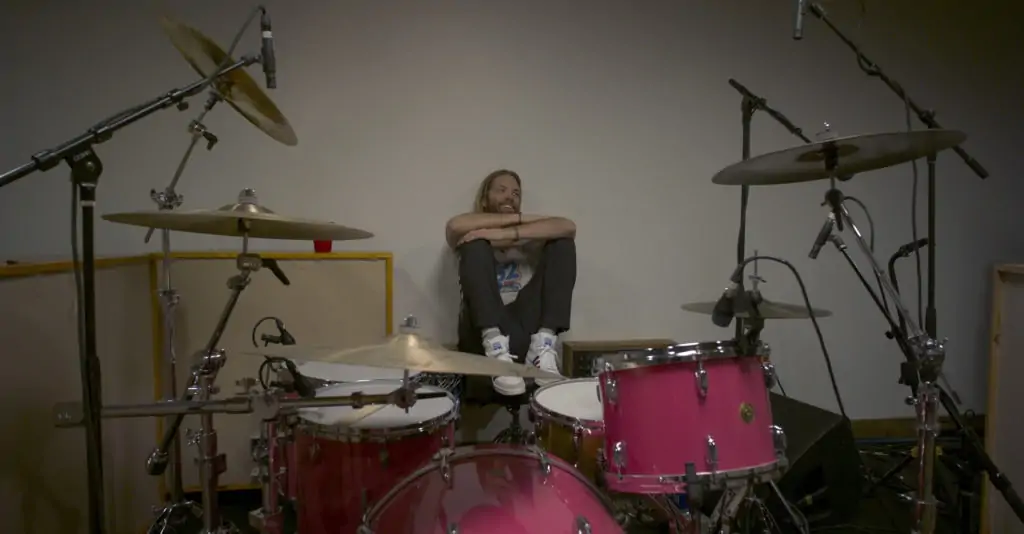
Rarely able to scout ahead of time, the filmmakers made decisions on the day, shooting at a mixture of musicians’ homes, music studios and hotel rooms. Two hours of load in and set-up time were allocated to each location with the look maintained for at least an hour.
I wanted to adopt a punk rock approach and not be too serious. If there was an element of foreground to include in the frame, I would use it. If extra head room felt right, I’d go there.
Jessica Young
Young already understood how Grohl likes to lead a conversation when interviewing. “Once he starts, he doesn’t want to stop unless there is an unavoidable sound issue. It’s not like a journalist interviewing a musician – it’s two artists having a dialogue. That’s a performance in its own right. They are riffing, telling stories, sharing experiences. He revels in that spontaneity, and you must be ready to roll when he is. We like to say, ‘You have to Grohl with it’.”
What Drives Us was always intended to be a talking heads and archival documentary film. Young kept lighting naturalistic but took some liberties with compositions. “I wanted to adopt a punk rock approach and not be too serious. If there was an element of foreground to include in the frame, I would use it. If extra head room felt right, I’d go there.”
Grohl often did not want to be on-camera during the interviews. “But people like to see and hear him, so a third roving camera angle caught his follow-up question or laughing moment,” says Young. “I wanted that third angle to feel behind-the-scenes, not afraid to expose the bones of production. It needed to feel a little rough around the edges to edit seamlessly with the handheld archival.”
Already having a strong relationship with Blackmagic, the production chose PL-mounted Blackmagic Ursa Mini Pro 4.6K G2s at 8:1 compression as A and B cameras, paired with a set of Zeiss Super Speeds – 18, 25, 35, 50, 85mm – which Young considers to be “workhorses” and offer a “great classic vibe and fast aperture”.
Young often shot wide open T1.4 or around T2-2.8. The camera’s built in ND filters made decreasing the stop easy, and a filter was often unnecessary. “I had RotaPolas on hand to control a reflection or shiny forehead,” she says.
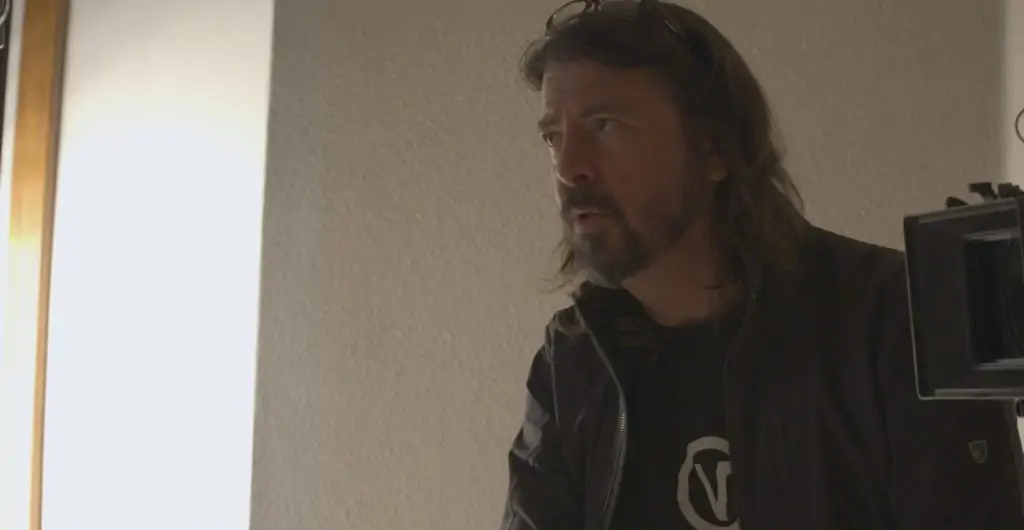
C camera was a Blackmagic Pocket Cinema Camera 4K with a variety of micro-four thirds lenses. Recording directly to SxS hard drives offered the reliability needed for long takes and the on-board Blackmagic Video Assist 7” monitors recorded proxies to SD cards for secure back-ups.
“The log base of Blackmagic is a great flat base that plays well with others, and in our case, plays really well with its own family,” says Young. “I knew we would be finishing in DaVinci Resolve and would have an easy transition from production to post.”
In-car footage was captured using Blackmagic Pocket Cinema Camera 4Ks mounted with simple suction cups rigs, kept out of sight of each other. Occasionally, these scenes were shot handheld from the passenger seat.
Young’s key collaborator, cinematographer Todd Bell, was either on set with her or tag-teaming cinematography duties. While Young found the A frame composition, Bell found a complementary B frame. Knowing the interviews and archival footage would be interspersed throughout the film, they did not need to focus on cutting A & B cameras together side by side.
“Our cameras shared a common AC who got us settled in with monitors,” says Young. “Todd and I then worked together tweaking the lighting, giving direction to our small G&E team of gaffer Benny Alvarado and key grip Kevin Gallagher. Dave would roll in an hour or so before our subject, glance at the monitors, give a nod of approval, beeline for the coffee, and keep us laughing until we were ready to roll.”
The multitude of lighting options utilised included ARRI SkyPanel S60s, S30s, ARRI M18s, Quasar Science tubes, and standard smaller fresnels. “I tended to think about lighting from the back of the frame to the front. I might set a subtle hint of light in the background, settle in a lamp or control the window first, and then decide on an appropriate key light source for the location.”
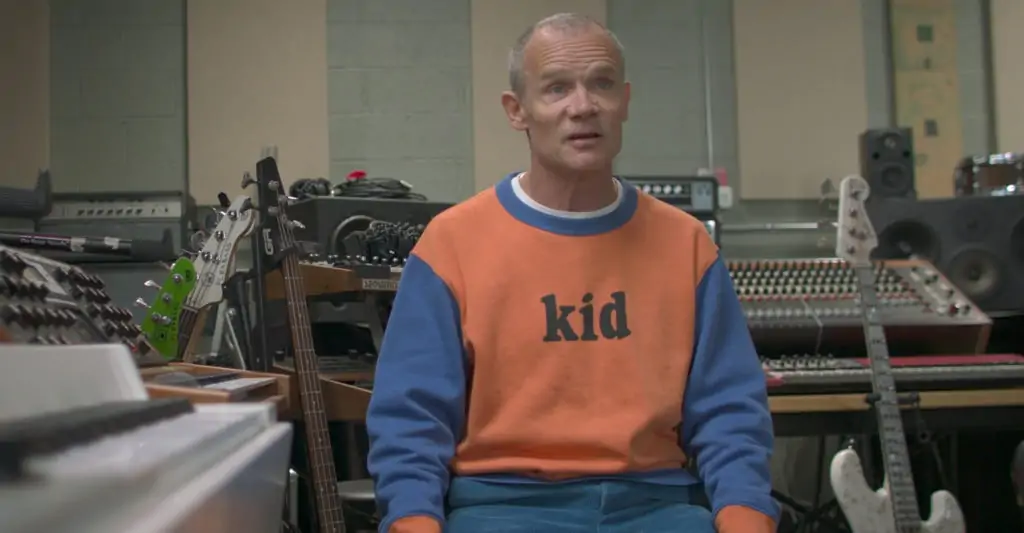
If space permitted, a big book light was created using the M18 and an 8×8 full grid, or the light was set far away from the subject, controlling the spill, and then diffusing it closer to them.
Listening to the musicians’ stories was Young’s most treasured aspect of the experience, deeming it a “masterclass” in rock ‘n’ roll. “The tenacity with which these musicians pursued their dreams is inspirational. I can find many parallels of band life on the road and the dynamics of working on a project with a small doc film crew.”
